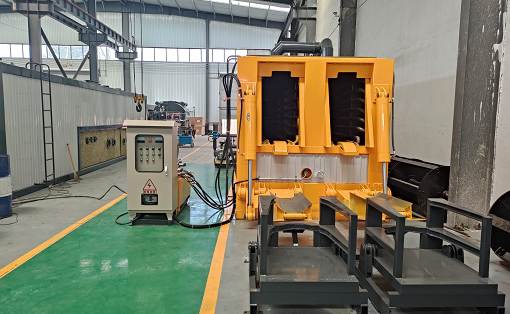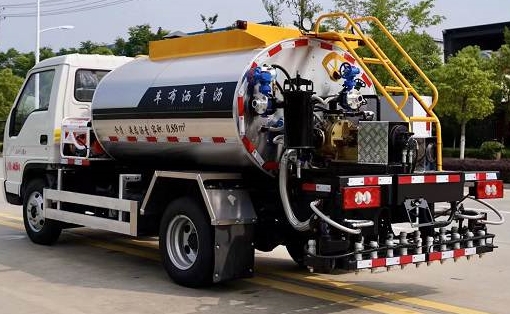Bitumen decanter equipment that reduces asphalt heat loss
Bitumen decanter equipment can be placed in a complex system as an independent unit, replacing the existing heat source de-barreling method, or in parallel as a core component of a large set of equipment, or it can work independently to meet the requirements of small-scale construction operations.
The Sinoroader bitumen decanter device is mainly composed of a de-barreling box, a lifting mechanism, a hydraulic thruster and an electrical control system. The box is divided into two chambers, the upper chamber is a barreled bitumen melting chamber, and heating coils are evenly distributed around it. The heating pipe and the bitumen barrel mainly exchange heat in a radiation manner to achieve the purpose of bitumen de-barreling. Several guide rails are the tracks for the bitumen barrel to enter. The lower chamber is mainly to continue heating the bitumen removed from the barrel to make the temperature reach the suction pump temperature (100℃), and then the asphalt pump is pumped into the upper chamber. At the same time, an empty barrel is pushed out at the rear end outlet. There is also an oil tank on the platform at the entrance of the asphalt barrel to prevent the dripping bitumen from flowing out.
The inlet and outlet doors of the device adopt a spring automatic closing mechanism. The door can be automatically closed after the asphalt barrel is pushed in or out to reduce heat loss. A temperature gauge is installed at the asphalt outlet to observe the asphalt outlet temperature. The electrical control system can control the opening and closing of the hydraulic pump and the reversing of the electromagnetic reversing valve to realize the advance and retreat of the hydraulic cylinder. If the heating time is extended, a higher temperature can be obtained. The lifting mechanism adopts a cantilever structure. The bitumen barrel is lifted by an electric hoist, and then moved horizontally to place the bitumen barrel on the guide rail. A temperature gauge is installed at the outlet of the asphalt meltering equipment to observe its outlet temperature.
Bitumen decanter equipment can be placed in a complex system as an independent unit, replacing the existing heat source de-barreling method, or in parallel as a core component of a large set of equipment, or it can work independently to meet the requirements of small-scale construction operations.
The Sinoroader bitumen decanter device is mainly composed of a de-barreling box, a lifting mechanism, a hydraulic thruster and an electrical control system. The box is divided into two chambers, the upper chamber is a barreled bitumen melting chamber, and heating coils are evenly distributed around it. The heating pipe and the bitumen barrel mainly exchange heat in a radiation manner to achieve the purpose of bitumen de-barreling. Several guide rails are the tracks for the bitumen barrel to enter. The lower chamber is mainly to continue heating the bitumen removed from the barrel to make the temperature reach the suction pump temperature (100℃), and then the asphalt pump is pumped into the upper chamber. At the same time, an empty barrel is pushed out at the rear end outlet. There is also an oil tank on the platform at the entrance of the asphalt barrel to prevent the dripping bitumen from flowing out.
The inlet and outlet doors of the device adopt a spring automatic closing mechanism. The door can be automatically closed after the asphalt barrel is pushed in or out to reduce heat loss. A temperature gauge is installed at the asphalt outlet to observe the asphalt outlet temperature. The electrical control system can control the opening and closing of the hydraulic pump and the reversing of the electromagnetic reversing valve to realize the advance and retreat of the hydraulic cylinder. If the heating time is extended, a higher temperature can be obtained. The lifting mechanism adopts a cantilever structure. The bitumen barrel is lifted by an electric hoist, and then moved horizontally to place the bitumen barrel on the guide rail. A temperature gauge is installed at the outlet of the asphalt meltering equipment to observe its outlet temperature.


































